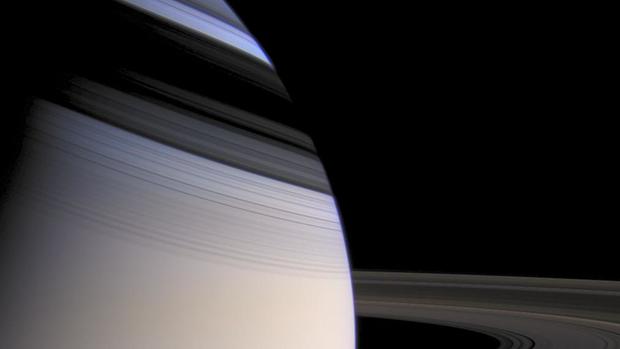Storms the size of Earth on Saturn, explained
Every few decades, Saturn is enveloped in giant thunderstorms that produce intense lighting and cloud formations.
Dubbed great white spots, these storms are active at the center and have long tails that wrap around the planet. The storms can be more than 6,000 miles wide, nearly the diameter of the planet Earth. Six of these massive storms have been reported the past 140 years on Saturn.
Until now, the cause of these storms and why they are such a rarity on the planet was a mystery.
Now, a study in the journal Nature Geoscience found the weight of the water molecules in the planet's atmosphere might explain them.
Using numerical modeling, Caltech's planetary scientists Andrew Ingersoll and his graduate student Cheng Li were able to simulate the formation of the storms. Because these water molecules are heavy compared to the hydrogen and helium that comprise most of the gas-giant planet's atmosphere, they make the upper atmosphere lighter when they rain out, and that suppresses convection.
Over time, this leads to a cooling of the upper atmosphere. But that cooling eventually overrides the suppressed convection, and warm moist air rapidly rises and triggers a thunderstorm.
"For decades after one of these storms, the warm air in Saturn's deep atmosphere is too wet, and too dense, to rise," Li said, adding that a drier atmosphere would likely produce continuous, smaller storms.
"The air above has to cool off, radiating its heat to space, before its density is greater than that of the hot, wet air below," he said. "This cooling process takes about 30 years, and then come the storms."
"The upper atmosphere is so cold and so massive that it takes 20 to 30 years for this cooling to trigger another storm," Ingersoll added.
Ingersoll and Li found that this mechanism matches observations of the great white spot of 2010 taken by NASA's Cassini spacecraft, which has been observing Saturn and its moons since 2004.
The researchers are also interested in understanding why similar storms aren't found on Jupiter. If Jupiter's atmosphere contains less water vapor than Saturn, that would explain the absence of these planet-encircling storms.
In November 2016, NASA's Juno spacecraft, now en route to Jupiter, will start measuring the water abundance on that planet.
"That should help us understand not only the meteorology but also the planet's formation, since water is expected to be the third most abundant molecule after hydrogen and helium in a giant planet atmosphere," Ingersoll said.

